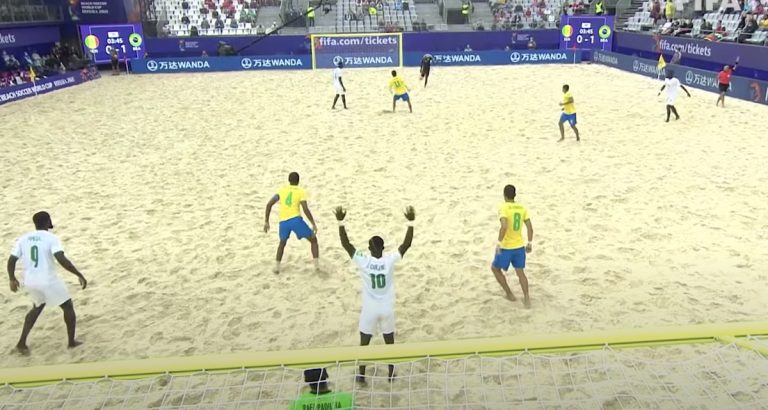What Changes Will Adidas Make to the World Cup Ball From Qatar 2022?
Exploring the evolution of Adidas’ soccer balls, this article scrutinizes the issues faced in the past, particularly during the 2010 South Africa World Cup, and anticipates the technological advancements for the upcoming 2026 World Cup.
Adidas Jabulani: The 2010 South Africa World Cup Ball’s Issues and Criticisms
The Adidas Jabulani, used in the 2010 World Cup, was notorious for its erratic flight pattern. Players like Gianluigi Buffon and Robinho criticized it for being difficult to control, with Brazil’s goalkeeper Júlio César comparing it to a “supermarket ball.” The only player who seemed to adapt well was Uruguay’s Diego Forlan.
The ball’s design, featuring eight bonded panels with aerodynamic grooves, was intended to improve its flight, but instead it resulted in a higher critical speed for knuckling, around 55 mph, making its trajectory unpredictable.
Jabulani’s Widespread Use and Reception
The Jabulani wasn’t limited to the World Cup; it was also used in the 2009 FIFA Club World Cup, the 2010 African Cup of Nations, and various leagues like the 2010-11 Bundesliga and MLS season. Despite its international exposure, the ball received widespread criticism. High-profile players like Iker Casillas and Lionel Messi struggled with its unpredictability, while others like Clint Dempsey found ways to adapt.
Advances in Soccer Ball Technology Since 2010: Evolution Post-Jabulani
Following the controversy, Adidas focused on improving their soccer ball technology. They invested in research to understand the aerodynamics of the ball better. The subsequent balls, such as those used in later World Cups, incorporated feedback from the Jabulani experience, aiming for a design that offers more stability and predictability in flight.
Adidas’ Approach to the 2022 Qatar World Cup Ball: Innovations Based on Past Learnings
For the 2022 FIFA World Cup in Qatar, Adidas introduced a revolutionary soccer ball named “Al Rihla.” This ball represented a significant technological advancement over previous models, including the controversial Jabulani used in the 2010 World Cup. Al Rihla, which means ‘The Journey’ in Arabic, incorporated several key features and innovations that addressed the shortcomings of its predecessors.
One of the most groundbreaking features of the Al Rihla was its Connected Ball Technology. Developed in collaboration with FIFA and KINEXON, this technology included a sensor embedded in the ball that provided real-time data to the Video Assistant Referee (VAR) system. This sensor, functioning 500 times per second, offered precise information on when a player touched the ball, greatly aiding in offside decisions and unclear touch detections.
This technology was rigorously tested in various professional and grassroots football clubs worldwide, including at the FIFA Arab Cup and the FIFA Club World Cup 2021, with no perceived change in performance.
In terms of design, Al Rihla boasted a CRT-Core at its heart, which provided speed, accuracy, and consistency, crucial for high-paced action and precision. This core was instrumental in maintaining shape and air retention, as well as rebound characteristics. Additionally, the ball’s exterior featured the Speedshell, a new 20-panel design that enhanced flight stability and swerve.
The ball’s design utilized macro- and microtextures, along with surface debossing, to improve its aerodynamics and consistency in flight. According to Franziska Löffelmann, the Design Director at Adidas, the ball’s new design allowed it to maintain a significantly higher speed through the air, making it the fastest and most accurate FIFA World Cup ball to date.
Moreover, Adidas and FIFA designed Al Rihla with sustainability in mind. It was the first World Cup ball to be designed exclusively using water-based inks and glues, reflecting a commitment to environmentally friendly practices.
The introduction of Al Rihla marked a significant step forward in soccer ball technology, addressing the challenges faced by previous balls like the Jabulani, which was known for its erratic flight and unpredictability. Adidas’ continuous innovation in this field demonstrates their commitment to enhancing the game of soccer, ensuring that the equipment used in the world’s most-watched sporting event meets the highest standards of performance and sustainability.
2026 Stadiums and Their Impact: Gillette Stadium in Foxborough
Gillette Stadium in Foxborough, one of the venues for the 2026 World Cup, presents an opportunity for Adidas to showcase their advancements in soccer ball technology. The stadium’s conditions, like altitude and weather, can be factors in ball performance, considering how the Jabulani was affected by similar conditions.
France, “Les Blues” are the favorites to win the USA, Canada and Mexico 2026 World Cup according to ESPN BET Massachusetts.
Anticipated Features of the 2026 World Cup Ball: Design and Performance Expectations
Expectations are high for the 2026 World Cup ball. Adidas is anticipated to implement a design that enhances stability, control, and predictability, learning from the Jabulani’s shortcomings. The new ball is expected to cater to a wide range of playing conditions, considering the diverse locations of the upcoming World Cup.
Adidas’ Commitment to Sustainability: Environmentally Friendly Production
Recent trends in Adidas’ production emphasize sustainability. The company is likely to incorporate eco-friendly materials and practices in the manufacturing of their 2026 World Cup ball, aligning with global environmental concerns.
Collaboration With Professional Players: Player Insights in Design
Adidas has been known for involving professional soccer players in the design process of their balls. This collaboration ensures that the ball meets the practical demands of high-level play and addresses player-specific concerns.
Rigorous Testing and Quality Assurance: Ensuring Reliability and Consistency
The development of a World Cup soccer ball involves extensive testing to ensure its performance under varying conditions. Adidas is expected to conduct thorough quality assurance to avoid issues faced with the Jabulani, ensuring a ball that performs consistently.
Conclusion: Looking Towards 2026
In sum, Adidas’ journey from the controversial Jabulani to the upcoming FIFA World Cup 2026 ball highlights a commitment to innovation, player collaboration, and sustainability. The anticipation for the new ball underscores the significant role of equipment in shaping the beautiful game’s future.
As of now, there is no official information or announcement from Adidas detailing the specific changes or improvements they intend to make to the World Cup soccer ball post-Qatar 2022.
However, looking at the evolution from the controversial Jabulani ball used in the 2010 World Cup to the Al Rihla ball in Qatar 2022, it’s evident that Adidas continuously focuses on enhancing ball performance, addressing issues from previous tournaments, and incorporating technological innovations. The Al Rihla ball introduced Connected Ball Technology, providing precise data to aid VAR decisions, and featured a design aimed at maintaining higher speeds and ensuring flight stability.
For future developments, it’s reasonable to expect that Adidas will continue this trajectory of innovation. This could involve further advancements in connected technology, aerodynamic improvements, and possibly even more sustainable manufacturing processes. However, without specific announcements or details from Adidas, any discussion on future changes remains speculative.


